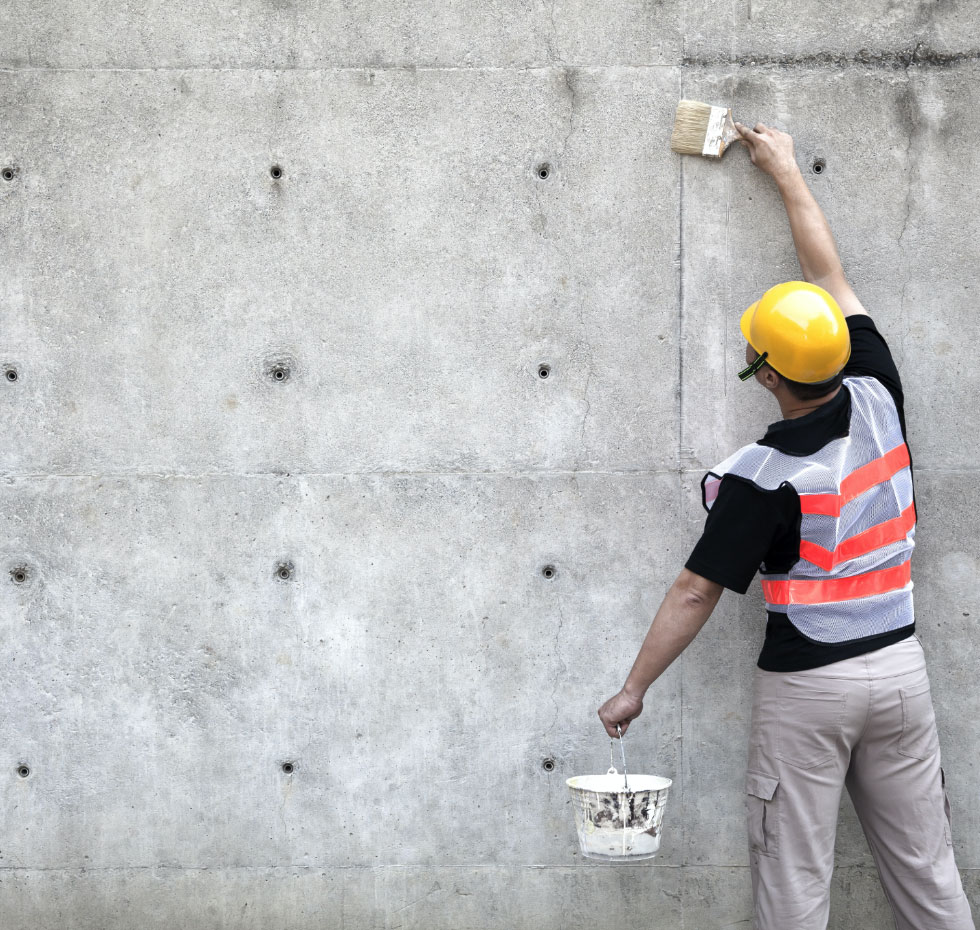Brick & Concrete Restoration
Brick & Concrete Restoration
As durable and reliable as brick and concrete-built structures are, they too are susceptible to deterioration. Poor installation, lack of maintenance and the elements can all negatively impact your property.
Most damage to brick and concrete walls is caused by:
- Water penetration
- Expansion and contraction caused by temperature changes
- Cracks caused by building settlement or inadequate control joints
Control joints also play a significant role in how your property handles movement and moisture. Worn-out control joint caulking, or lack thereof, at windows and doors will cause vertical and horizontal cracking when movement occurs.

Although brick and concrete are both designed to absorb a minimal amount of water, cracks, holes and other damage can lead to too much water absorption. This excessive moisture can give rise to:
- Spalling (a type of thermal expansion that causes peeling and flaking)
- Freeze/thaw damage (causes cracks as water expands and freezes)
- Efflorescence (salt deposits on a surface due to water presence)
- Mold, mildew and fungus growth
- Cracking mortar
For long-term, superior performance and value, moisture management must be a top priority in a building’s design and construction. Where age and nature have already done their part, the team at Orbit will happily assess the damage at play and restore your building back to its former glory.

Everything You Need to Know
What causes spalling in brick and concrete buildings?
When brick starts to peel, you know it’s beginning to spall, usually due to freeze and thaw cycles. This is caused by water from melting snow or rain penetrating the brick and getting trapped inside. When temperatures drop and the trapped moisture freezes, it expands, creating outward pressure and cracks. When temperatures get warm once again, the water melts and contracts, causing the brick and concrete to peel, flake, crumble and pop off.
What causes efflorescence?
Efflorescence usually occurs on surfaces that are porous and prone to the absorption of soluble salts. It’s a seasonal problem occurring when the salts in brick are moved to the surface due to evaporating moisture. It’s a process usually triggered by low temperatures during winter when rain and snow are most common.
How do we spot it? Efflorescence is not to be confused with staining, which occurs in different colors. Efflorescence is a white, sometimes grey-tinted powdery substance that sits on the surface of brick and concrete.
How can we treat efflorescence?
Efflorescence can be treated with dry brushing using a stiff bristle brush. If the surface needs a more invasive treatment method to fully remove the salt stains, we utilize methods like chemical cleaning, pressure washing and in some cases, sandblasting.
Why Choose Us

Excellent Communication

Fully Insured

Detailed Proposals

Colour Consultations
More Restoration Services
Our Values
Deliver Quality
Commit to Our Customers
Operate Transparently

Pursue Growth
Foster Relationships
5 Years Warranty











